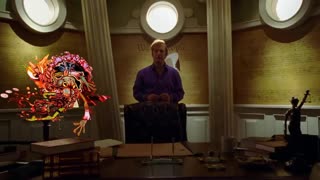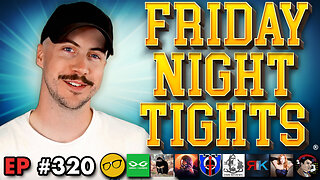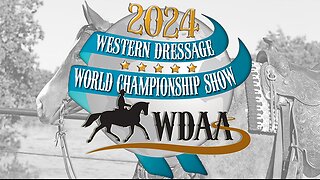Uncle John's Band Sugar Magnolia The Grateful Dead
Uncle John's Band Album: Workingman's Dead (1969)
Sugar Magnolia Album: American Beauty (1970)
The Grateful Dead
Deadies Jerry Garcia and Robert Hunter collaborated on "Uncle John's Band," which was originally part of their stage set before they recorded it as a single track from their Workingman's Dead album. It would go on to become one of their better-known songs, even making it into the Rock and Roll Hall of Fame's "500 Songs that Shaped Rock and Roll."
The style of Uncle John's Band is a laid-back bluegrass-folk arrangement on acoustic guitar. Vocals are in close harmony in a conscious effort to echo Cosby Stills & Nash - it worked, because CS&N covered it on their 2009 concert circuit.
Lots of Americana to touch on here - this was the first time the epithet "goddamn" had been heard in a Hot 100 hit. A "buckdancer" is "one who dances the buck-and-wing," according to The Dictionary of American Regional English. The phrase "buckdancer's choice" is both a popular fiddle tune of Appalachia, and the title of a poetry collection by the American poet James Dickey; you'll recognize him more when we tell you that one of his other works was turned into a little 1972 film called Deliverance.
More Americana in Uncle John's Band: the line "fire and ice" references American poet Robert Frost's poem of the same name, and the line "Don't tread on me" is a famous phrase that first came out during the American Revolution from Britain - scope out an image of a yellow flag with a coiled, hissing snake sometime, that's the "Gadsden flag," later popular with the American Tea Party political movement. The line "the same story the crow told me" references Johnny Horton's "The Same Old Tale the Crow Told Me," which was the B-side to the better-known "Sink the Bismarck." While that's a British song, Horton was very much an American rockabilly artist (and he has no relation to the Horton who hears a who).
OK, who is Uncle John? That could be anybody and everybody - fan speculations run wild from the biblical John the Baptist to Mississippi John Hurt. But maybe, like the Beatles' Sergeant Pepper, it was just an alias made up for fun.
This was one of the Dead's first attempts to reach beyond their little cult and take a shot at the mainstream. According to Dennis McNally, the band's biographer and publicist, a Warner Bros. executive was so ecstatic when he heard a marketable song from the band, it sent him running down the hallways with the news. "He was expecting more of Anthem Of The Sun stuff, and he ran down the corridors of Warner Bros., screaming, 'The Grateful Dead have written a song we can put on the radio!' And he was very happy," McNally said in 2021.
The single of Uncle John's Band release was cut by 25 seconds from the album version. Although this plan didn't work out, with the single scoring a lukewarm #69, the album itself went on to sell well at one million copies - a first for them - and "Uncle John's Band" became one of their more well-known songs.
David Dodd, author of The Complete Annotated Grateful Dead lyrics looked into the possibility that this song is about a string band called the New Lost City Ramblers (NLCR), whose John Cohen was nicknamed "Uncle John."
Dodd started a discussion on the topic, and Robert Hunter weighed in, lending support to the theory. Hunter's wrote:
I like the direction of the discussion on UJB. It's right on the money. I thought I'd give you a piece to the puzzle which is not so obvious; a less direct allusion: compare:
like the morning sun you come
and like the wind you go
with:
Come all ye fair and tenders ladies
Be careful how you court young men
They're like the stars on a summer's morning
First appear and then they're gone
(NLCR did that one too.)
and while we're at it, they're both what is known as "come all ye" tunes which is a rich tradition.
Tom Paley was a math teacher at University of Connecticut the year I was there. (I was president of the folk music club). His replacement in the Ramblers, Tracy Schwartz, came to a party at Ellen Cavanaugh's hourse, along with Garcia, Nelson and me, after one of the NLCR shows in 1964 and we played until way early in the morning.
Congratulations on Rosemary!
So, it seems Hunter is backing the NLCR interpretation.
Musically, Uncle John's Band was inspired by Bulgarian folk music. Really.
In 1955, the Bulgarian composer Philip Koutev assembled a 24-voice choir to record songs culled from the villages of his country. His recordings found their way to Elektra Records, which released them in America in 1966 on an album called Music Of Bulgaria, credited to the Ensemble Of The Bulgarian Republic.
The album found a following on the West Coast, and it enthralled Jerry Garcia, who called the voices "exceptionally pure." It's influence is most apparent on "Uncle John's Band."
In Going Down the Road: A Grateful Dead Traveling Companion (p. 222) by Blair Jackson, Garcia says that he "stole" the melody for Uncle John's Band from a tune heard while listening to records by the Bulgarian Women's Choir and some Greek-Macedonian music. He couldn't recall exactly which song it was.
In the same interview, Hunter discusses how he came up with the lyrics while listening to the music that the rest of the band already put together on tape. The words "god damn, Uncle John's mad" kept running through his mind, but these turned into, "Come hear Uncle John's Band." In Hunter's words, the moment of creative revelation was the kind where "sparkles start coming out of your eyes."
Written by Robert Hunter and Bob Weir, "Sugar Magnolia" is one of the most well-known songs by the most obscurely famous band. First performed at the Fillmore West in San Francisco, in June of 1970, Deadheads will be quick to point out that "Sugar Magnolia" is the band's second-most-frequently-performed song, trailing only behind "Me & My Uncle."
The line "jump like a Willys in four wheel drive" refers to the model of jeep manufactured by Willys-Overland Motors, most likely the Willys MB, which saw the most production of the Willys line at over 335,000 produced for WWII. An article on the Willy jeep, complete with its jumping ability, appears in the November 1992 issue of Smithsonian magazine.
Frequently in live performances, Sugar Magnolia is divided into two parts, with the coda coming long after the song proper. That delay might be a few drum beats, a few songs, or a few days, depending, as everything does, upon the mood of the band.
A typical literary reference is the similarity between the girl described in this song and the character Goldberry in J.R.R Tolkien's Fellowship of the Ring - right down to being down by the river and rolling in the rushes.
Goldberry is a character from the works of the author J. R. R. Tolkien. She first appeared in print in a 1934 poem, The Adventures of Tom Bombadil, where she appears as the wife of Tom Bombadil. Also known as the "River-woman's daughter", she is described as a beautiful, youthful woman with golden hair.
On her possible origins, scholars have compared her with a character in George MacDonald's 1867 fairy tale The Golden Key, and with the eponymous character in the late-medieval lyric poem The Maid of the Moor. Her characterisation has been described as a mixture of the domestic and the supernatural, connected in some way with the river Withywindle in the Old Forest of Middle-earth. Some have suggested that she may be a divine being in Tolkien's mythology; others, that she recalls the biblical Eve, a token of the unfallen creation; and an embodiment of joy, serving with Tom Bombadil as a model of the Catholic sacrament of marriage.
Both Bombadil and Goldberry were omitted from Peter Jackson's film trilogy; they were however included in the 1991 Russian television play Khraniteli.
Tom Bombadil clearly identifies her as having been discovered by him in the river Withywindle within the Old Forest, and her title "River-woman's daughter" strongly suggests that she is not a mortal human being. In a 1958 letter, Tolkien wrote that Goldberry "represents the actual seasonal changes" in "real river-lands in autumn".[T 1] He conveyed this notion through a poem recited by Frodo Baggins in The Fellowship of the Ring, specifically the lines "O spring-time and summer-time, and spring again after!"
The poem tells of how she drags Tom into the river before he escapes, returning later to capture her and make her his bride.
-
 1:14:30
1:14:30
Psychological operations
10 days agoThe Bar And The God Stone Of Jacob's Pillow
138 -
 4:41:10
4:41:10
Tundra Gaming Live
10 hours agoThe Worlds Worst Horror Streamer Has Heart Attack Playing Phasmophobia
50K8 -
 1:38:24
1:38:24
JoBlo Originals
7 hours agoFriday Night Flicks!
54.1K8 -
 5:09:20
5:09:20
Nerdrotic
11 hours agoAgatha All Along Geyest Show EVER! Rings of Power Girl POWER! - Friday Night Tights #320 Jonny Law
114K30 -
 1:18:43
1:18:43
Edge of Wonder
8 hours agoPager Explosions: How Technology Can Be Used Against Us
60.8K10 -
 8:19:47
8:19:47
Akademiks
14 hours agoDiddy Arrest Footage LEAKED! Police Say He's ON S*ICIDE watch after Being Locked up in MDC BROOKLYN
175K75 -
 11:44:20
11:44:20
Total Horse Channel
18 hours ago2024 WDAA World Championship Show | Friday | Arena One
62.7K1 -
 4:16
4:16
The Worlds Funniest Animals
9 hours agoAnimals Gone Wild Compilation
49.6K9 -
 2:22:56
2:22:56
WeAreChange
11 hours agoDiddy Will Get EPSTEINED?! The Power Brokers Are LOSING IT
99.3K74 -
 1:56:20
1:56:20
Twins Pod
1 day agoWar Hero or War Criminal? | Twins Pod - Episode 31 - Eddie Gallagher
119K25